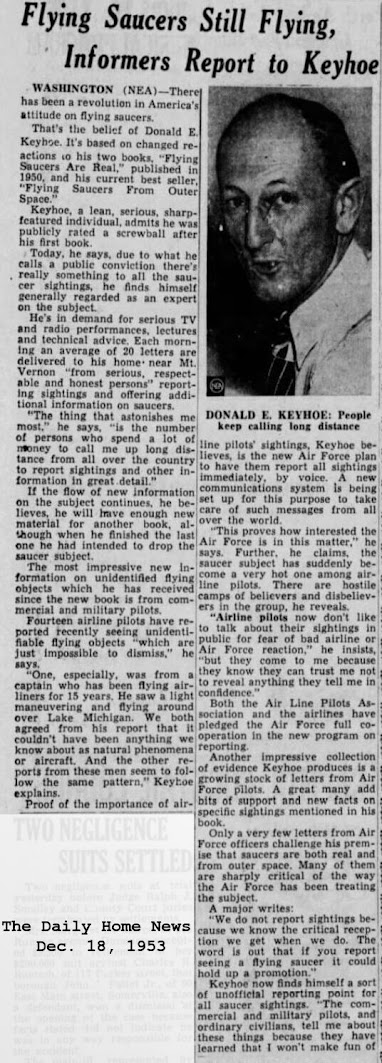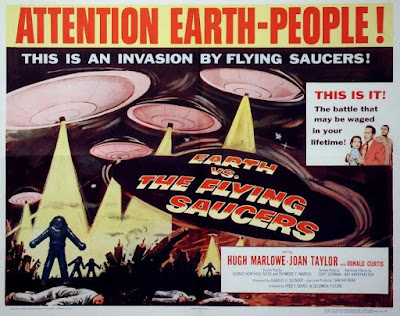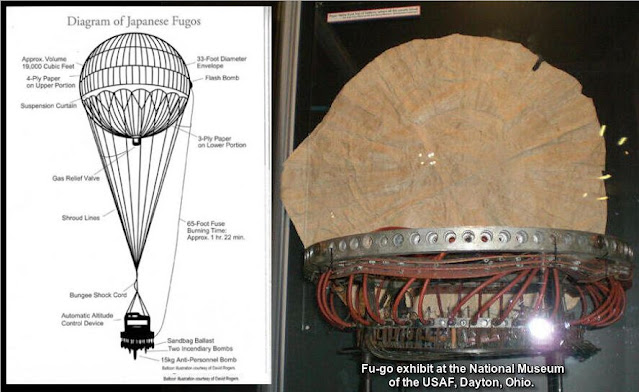Donald E. Keyhoe was born in Iowa in 1897, so he was a 50-year-old man during the summer the flying saucers arrived in 1947. He went on to become the best-known figure on the topic, and this article is chiefly a scrapbook on him as a pioneering author and UFO lecturer. It’s not intended as a complete biography, but along the way we’ll hit some of his career highlights.
Donald Edward Keyhoe was a retired Marine major who had served in World War I and became a writer of both news articles and fiction, including adventure stories for pulp magazines.
In 1927 Charles Lindbergh made his historic solo trans-Atlantic flight. Afterwards, he flew across the US on a 3-month publicity tour, managed by retired Marine pilot Donald E. Keyhoe. The experience was later documented by Keyhoe in the 1928 book, Flying with Lindbergh. That was the start of Keyhoe’s new career as an author of adventure stories and non-fiction.
Keyhoe’s article on the potential of rocketry and space in The Baltimore Sun, April 10, 1938, “To Paris by Rocket.” His closing lines discussed the price of being a pioneer:
“The first who dares will probably never be heard of again. Many others may follow and fail before the secrets of space are learned. But success will come. There has never been a frontier which man has not dared to cross.”
In 1949 the editor of True magazine sent Keyhoe the assignment on the flying saucer story, hoping Keyhoe’s military contacts could help him penetrate the secrecy by the government. The resulting article was a sensation almost as big as the original fever of 1947, and along with the resulting 1950 book, The Flying Saucers Are Real, proved it was a bankable topic. Keyhoe was persuasive since he focused on factual, documented cases from credible witnesses, but he often leapt far ahead of the evidence. His message solidified some notions that had been circulating into the tenets of UFO belief:
1) Flying saucers are spacecraft from other worlds.2) The government knows it.3) There is a government cover-up.
Keyhoe was promoting flying saucers just as the Air Force was trying to close the book on the problem. They became the villain in Keyhoe's story, and to them, he was a major pain in the neck.
 |
| The Buffalo News - Daily News Ad, Jan. 6, 1950 |
When Keyhoe expanded the material into The Flying Saucers Are Real, he received some free press by claiming authorities were suppressing the book.
 |
| Reading Eagle, May 25, 1950 |
Clip of Donald Keyhoe that was used in the
1950 movie short, The Flying Saucer Mystery.
Keyhoe had a best-selling paperback book, and was in demand by the media, becoming a popular attraction on the lecture circuit. The typical flying saucer lecture was generally held at a public venue, anything from a gymnasium to an auditorium, with a modest admission or donation charged to attendees. The program usually included a speaker or two, followed by a question and answer session. There was also a table set up where the host could sell the guest’s merchandise, and also gather attendees’ addresses for mailing lists, and recruit new members for their organization.
 |
| Keyhoe at press conference about the Washington, DC, UFOs of 1952 |
Keyhoe’s second book was Flying Saucers from Outer Space, this time a hardcover release.
 |
| Ventura County Star-Free Press, Oct. 1, 1953 |
“He's in demand for serious TV and radio performances, lectures and technical advice. Each morning an average of 20 letters are delivered to his home near Mount Vernon ‘from serious, respectable and the honest persons quote reporting the signings and offering additional information on saucers.’”
 |
| Keyhoe NEA news article, Dec. 24, 1953. |
 |
| The Daily Times, May 15, 1954 |
Some Professional Advice
Donald Keyhoe frequently corresponded and “talked shop” with Captain Edward J. Ruppelt, the head of the U.S. Air Force UFO investigation from 1951 until 1953. After Ruppelt retired from the AF, and in 1954 he was consulting for the movie, Unidentified Flying Objects: The True Story ofFlying Saucers (released May 1956) and began working on a book about his days with Project Blue Book. Ruppelt asked Keyhoe for business advice. Keyhoe’s June 28, 1954, reply detailed the grind of being on the lecture circuit:
“You asked about lectures... don't sign up unless you get a good offer, better than the one I had. My outfit took 40% of the gross and I had to pay my own expenses. I wouldn't agree to less than a 70-30 split if I talked next season, and I'd try for 75-25%. You should be able to get some paid engagements out in your area, I think; I don t know any California bureaus, but your movie company people should know some names. You could arrange for evening talks, so they wouldn’t interfere with your work — or Saturday and Sunday appearances, before clubs, etc. Regular bureaus often get $250 for a luncheon engagement from the bigger luncheon clubs, Ad, Rotary, etc.
If you didn’t have to travel out of your area, you would make some money. They’d want about a 30-minute talk, for noonday clubs; 45 minutes to an hour for evening talks. My trouble was that I was scheduled for isolated talks involving expensive travel — to Milwaukee, Kansas City, Buffalo, etc. Considering the lost time, plus expenses, I figure I barely broke even; however, I did it at first in order to get more people talking about my book. I learned later that one good TV program, on a network, is worth twenty such lectures, probably worth a hundred of them.”
 |
| June 28, 1954 |
 |
| Flying Saucer Conspiracy, 1955 |
 |
| Detroit Free Press, April 8, 1956 |
In 1956, Edward J. Ruppelt’s The Report on Unidentified Flying Objects was released, and a few passages had barbs about Keyhoe. Of his 1950 book, “Keyhoe had based his conjecture on fact, and his facts were correct, even if the conjecture wasn't.” Of Keyhoe’s 1953 book, Ruppelt said:
“The book was based on a few of our good UFO reports that were released… The details of the specific UFO sightings that he credits to the Air Force are factual, but in his interpretations of the incidents he blasts way out into the wild blue yonder.”
 |
| Daily Press (Newport News, VA), March 22, 1957 |
 |
| The Cincinnati Enquirer, March 25, 1957 |
The National Investigations Committee on Aerial Phenomena (NICAP) was founded in 1956, with Keyhoe becoming its director early the next year.
 |
| Democrat and Chronicle, Nov. 17, 1957 |
 |
| The Pittsburgh Press, Jan. 5, 1958 |
 |
| The Pittsburgh Press, Jan. 10, 1958 |
 |
| Pittsburgh Post-Gazette, Jan. 11, 1958 ad |
 |
| Tulsa World, Sept. 7, 1958 |
 |
| The Oklahoma Courier, Oct. 4, 1958 |
 |
| Tulsa World, Nov. 5, 1958 |
 |
| TV listing March 3, 1966 |
 |
| The Kingston Daily Freeman, April 19, 1966 |
 |
| Tulsa World, Nov. 18, 1966 |
 |
| The Y-12 Bulletin, Jan. 18, 1967 (Paper For Y-l2 Employees of Union Carbide Corporation—Nuclear Division, Oak Ridge, Tennessee.) |
Project Blue Book’s “Swamp Gas” fiasco at the March 1966 flap in Ann Arbor, Michigan, caused a public outrage and an upsurge of interest in flying saucers. The demand for UFO lecturers was so great, two other speakers tried to horn in on Keyhoe’s territory, Jim Moseley, publisher of Saucer News, and the flying saucer physicist, Stanton Friedman.
| Akron Beacon, March 30, 1967 (Friedman) |
 |
| Mt. Vernon Register-News, April 11, 1967 (Moseley) |
The findings of the government-contracted
UFO evaluation led by Dr. Edward U. Condon was published as Scientific Study
of Unidentified Flying Objects in 1969. Keyhoe gave it the thumbs down.
 |
| Buffalo News, Jan. 11, 1969 |
NICAP was struggling with declining membership and financial problems, and in December 1969, the board forced Keyhoe to retire as director. Things continued to decay under the new leadership and NICAP was dissolved in 1980.
Donald Keyhoe’s final book was Aliens From Space: The Real Story of Unidentified Flying Objects, 1973.
 |
| Review from Richmond Times-Dispatch, Dec. 29, 1973 |
Hynek on Keyhoe's Disclosure Campaign
In the 1975 book, The
Edge of Reality, Dr. J. Allen Hynek was asked about UFO literature, “Would you recommend the books by Kehoe?” Hynek
replied with some criticism:
“I wouldn't recommend that myself. When I have a seminar on UFOs I do not put that on the reading list, but if a person wants a sociological perspective he should have it, because Kehoe was very largely fighting city he. He took as his objective to vilify the Air Force, to try and get congressional investigations and prove that the Air Force was covering up. What he should have done, of course, was publish solid technical reports on cases and then the sheer weight of those would eventually have toppled the Air Force. But instead he kept importuning congressman and didn't get anywhere.”
Keyhoe on Flying Saucer Crash-Retrievals
The subject of crashed UFOs came up when Keyhoe appeared on a television show in 1975, debating UFOs with a colonel in the USAF. Here’s the Toronto, Canada show listing from The Ottawa Journal, March 15, 1975:
Sunday 7:30 March 16, 1975 (Channel 6) Great Debate Resolved: "That Unidentified Flying. Objects from Outer Space - Exist." Speaking for the motion is Major Donald Keyhoe, author of several books on the subject of UFOs. His opponent Is Colonel William T. Coleman, former chief of Public Information for the U.S. Air Force and a science fiction novelist.
A recording of the show was archived in the Faded Discs project by Wendy Connors, in the collection “Profiles In Ufology” item no. 20: Major Donald E. Keyhoe and Col. William Coleman, USAF… 41:30
When asked about if any UFOs had been recovered and studied, Keyhoe brought up Silas Newton’s Aztec saucer story. (30:54 in the recording)
“There was the story about the crashed UFOs way down in the southwest and the small beings who were deep frozen. As far as I’m concerned, you can write that one off. I investigated that for True magazine, years and years ago. The who men who were putting it out were really trying to raise some dough. There may have been such a thing that happened, but I never found any evidence of it.”
(Keyhoe didn’t mention the saucer crash tale in his Jan. 1950 True article, but did discuss it in his first book. He said he’d flown to Denver to investigate, but it “turned out as expected – a dud… a big joke. But in spite of this, the ‘little men’ story goes on and on.”)
Recognition from MUFON
Ufologist Bob Pratt interviewed Keyhoe by telephone, “in 1977, 1978 and 1979 for thirty to fifty minutes each time.” See: Conversations with Major Keyhoe.
The annual Mutual UFO Network (MUFON) Symposium
was held July 29-30, 1978, in Dayton, Ohio. Major Donald E. Keyhoe delivered
the lecture, “Behind the UFO Secrecy," opening with his tenet, “The UFO
cover-up is the greatest deception in the history of the United States.”
 |
| MUFON Journal, April 1981 |
Throughout the 1980s, Keyhoe was often referred to in newspapers and occasionally reached for quotes. Major Donald E. Keyhoe died November 29, 1988, at the age of 91. His obituary appeared in the Washington Post, Dec. 2, 1988.
 |
| Lincoln Journal Star, Dec. 7, 1988 |
































